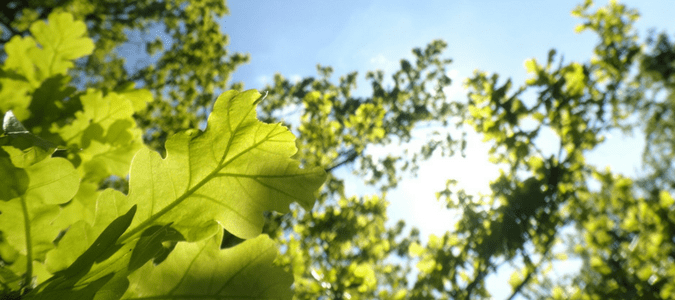
Summers in Bryan-College Station are hot and dry. Even in a year when we’re not in a drought, our trees, shrubbery and other landscaping plants will struggle to make it through our long summer days.
Established trees can withstand stretches of dry conditions during the summer, but if you planted any new trees or shrubs in the past year, they might be struggling by now. Lack of water causes stress that weakens plants, making them more susceptible to disease and fungus, and their root systems can become compromised.
Why is this an issue? Isn’t the drought over?
Even with all the rain we received this spring and early summer, the heat and intense sun will dry out the soil.
Each day, trees take in water through their roots and then transpire that moisture out through their leaves. Your majestic oaks have developed extensive root systems, including deep tap roots, which allow them to find water even in times of drought. These trees can go through a few gallons of water in a single day, meaning that over time, they will become increasingly thirsty and weak if no water is available.
New plantings and young trees don’t have the same advantages as the older trees. They need time to develop their extensive root systems, especially the deep tap roots necessary to find water on their own. Any time our area goes without rain for more than a couple weeks, especially during the summer, these younger plants will begin to struggle to survive.
Tips for watering trees
Below are some good practices for watering trees. Following these tips will help you make the most of your time and water resources and keep your trees strong and healthy.
- Water in the early morning or evening. Watering during the hottest part of the day causes water to evaporate before it gets where it needs to go.
- Avoid wetting foliage when watering. Each water droplet can act as a tiny lens, intensifying the sunlight and burning the leaves.
- Don’t overwater. Immature trees still have roots in a tight ball, and by over watering you risk drowning the plant. Instead, it’s ideal to provide water in a slow drip every four or five days. There are hose attachments that provide this kind of slow watering that work well with a hose timer. You can also purchase tree-watering bags that wrap around trees to provide irrigation.
- Avoid watering trees right at the trunk. Instead always place your hose, sprinkler or other irrigation at the dripline.
- Consider an injection water system. These systems allow you to water trees below the topsoil without wasting any water.
- Water trees and shrubs slowly. You want to get the soil wet about six inches below the surface, so small amounts of water applied over time are better than a lot of water all at once. Sprinklers and other above-ground solutions don’t work as well because water evaporates or runs off rather than sinking in deeply.
Irrigating your lawn will not help your trees. The amount of time and water used for lawn grasses isn’t sufficient to soak deeply enough for tree roots to access the water and discourages trees from putting down the deep roots necessary for long-term survival.
For more information on watering trees, Texas A&M has a great fact sheet online, and the Texas A&M Forest Service offers a video on how to water trees in a drought.
When to call out experts
Watering trees and other landscape plants is more than just putting a sprinkler out on the lawn. Installing an irrigation system for your trees and other landscape plants can be a wise investment.
Contact the experts at ABC Home and Commercial Services Bryan-College Station for a consultation. If you have existing irrigation systems, we’d also be happy inspect the plumbing and water distribution to make sure your plants are getting the TLC they deserve this summer.